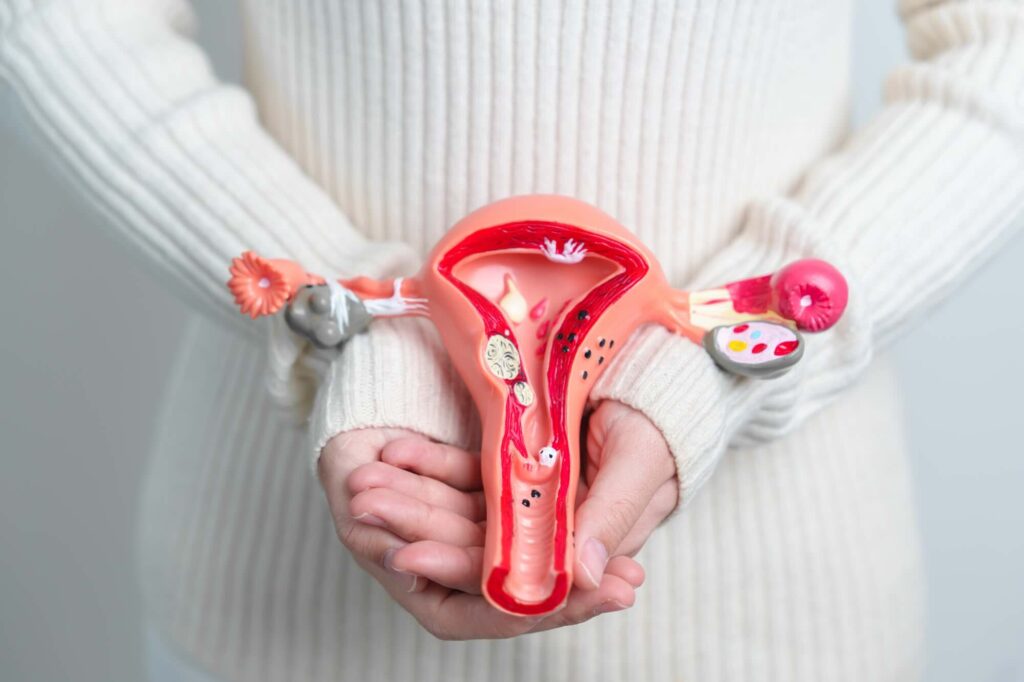Imagine a life without the debilitating pain and discomfort that has plagued you for years. A life where you can enjoy your favorite activities without fear of heavy bleeding or pelvic pressure. This dream could become a reality through a procedure called hysterectomy. In this guide, we’ll explore the world of hysterectomy, from understanding the various types, the reasons behind it, preparing for the procedure, and what to expect during recovery. With the right information and guidance, you can make an informed decision and take control of your health and well-being.
Key Takeaways
- This article provides an overview of hysterectomy, including types and reasons for the procedure.
- Pre-operative care and understanding potential risks are key to successful recovery after a hysterectomy.
- Seeking advice from a qualified gynecology surgeon can help ensure optimal results in terms of safety and quality of care.
Understanding Hysterectomy: Types and Reasons
Hysterectomy, the surgical removal of a woman’s uterus, is considered a major surgery and can also involve the removal of ovaries and fallopian tubes. It is performed for various medical reasons, such as uterine fibroids, ovarian cancer, or uterine prolapse. The type of hysterectomy to be performed is determined by factors such as the patient’s health history and the reason for the surgery.
Now, we shall explore the various types of hysterectomy and their respective purposes.
Laparoscopic Hysterectomy
A vaginal or laparoscopic hysterectomy is a minimally invasive surgical procedure that involves small incisions in the abdomen, utilizing a laparoscope (a small camera) to direct the surgical instruments. This technique offers numerous advantages over traditional open surgery, such as reduced intraoperative bleeding, shorter hospital stay, decreased pain, smaller incisions, less scarring, and faster recovery. However, it is not without risks, which may include major complications during surgery, bleeding, infections, vascular injury, bowel perforation, and damage to other organs.
Generally, the estimated recuperation period following a laparoscopic hysterectomy is approximately 4 to 6 weeks.
Abdominal Hysterectomy
In an abdominal hysterectomy, which is a type of abdominal surgery, the surgeon makes a 5- to 7-inch incision across the abdomen and removes the uterus through this incision. This traditional approach is the most frequent type of hysterectomy, accounting for approximately 54% of hysterectomies conducted for all non-malignant conditions. The main goal is to address underlying medical issues that necessitate the procedure, such as uterine fibroids or ovarian cancer.
Patients can expect a recovery period of about 4 to 6 weeks after an abdominal hysterectomy, during which following pre-operative instructions and post-operative care is necessary for optimal recovery and surgery success.
Vaginal Hysterectomy
Vaginal hysterectomy is a surgical procedure in which the uterus is removed via the vaginal route. This less invasive approach offers a shorter recovery time compared to an abdominal hysterectomy, with most patients being discharged within 24 hours of surgery. However, potential risks and complications associated with vaginal hysterectomy include:
- Heavy bleeding
- Blood clots in the legs or lungs
- Infection
- Damage to surrounding organs
- Adverse reaction to anesthesia
- Ureter damage
- Bladder or bowel damage
- Vaginal problems
Patients must avoid lifting heavy objects during recovery and strictly adhere to post-operative guidelines for a smooth recuperation.
Radical Hysterectomy
A radical hysterectomy is a surgical procedure utilized to treat cervical cancer and involves the removal of the uterus, cervix, tissues surrounding the cervix, and occasionally the upper part of the vagina and fallopian tubes. In contrast, a total hysterectomy involves the removal of the uterus and cervix, while a supracervical hysterectomy involves the removal of the uterus while leaving the cervix intact. This extensive procedure is typically performed for early-stage cervical cancer and can also be indicated for severe cases of endometriosis, pelvic inflammatory disease, or uterine fibroids.
The removal of the uterus, cervix, and surrounding tissues distinguishes a radical hysterectomy from other types of hysterectomy, and it is normally conducted through an incision in the lower abdomen.
Preparing for Hysterectomy: Tests and Pre-Op Care
Before undergoing a hysterectomy, certain tests may be necessary, such as Pap tests to examine for abnormal cervical cells, endometrial biopsy to evaluate the uterine lining, blood tests, electrocardiogram, and pelvic examination with ultrasound to assess the pelvic organs. Successful surgery significantly depends on appropriate pre-operative care. This includes following pre-operative instructions, having a bath or shower without using any lotions or nail polish, not shaving the surgical area oneself, staying hydrated to avoid constipation, obtaining all required prescriptions, and attending a pre-operative consultation with the surgeon to discuss medical history and current medications.
The Hysterectomy Procedure: What to Expect
During a hysterectomy procedure, the surgeon makes one or more small incisions in the abdomen to insert the necessary tools for the surgery, and the uterus is then removed through a cut in the lower abdomen. The operation typically takes approximately one hour to conclude. After the uterus and cervix have been removed, the incision is sutured.
Note that hysterectomies typically use general anesthesia. The specific method of hysterectomy depends on factors like the patient’s medical history, the surgical purpose, and the surgeon’s skill set.
Risks and Complications of Hysterectomy
Though hysterectomy is a common surgery, potential risks and complications should be acknowledged. Immediate surgical risks may include bleeding, infections, thrombosis, genitourinary and gastrointestinal tract injury, cardiovascular events, and the potential requirement for additional surgery. Potential long-term consequences of a hysterectomy may include bone loss/osteoporosis, heart disease, urinary incontinence, early menopause, prolapse, sexual dysfunction, constipation, chronic pain in the pelvis, vaginal dryness, and decreased sex drive.
Additionally, there are potential risks associated with anesthesia, such as nerve damage, allergic reactions, and, very rarely, death. Being in good health prior to the surgery can help reduce the risk of complications.
Post-Hysterectomy Recovery: Timeline and Tips
Recovery from a hysterectomy generally takes around four to six weeks, with a shorter recovery time expected for vaginal and laparoscopic hysterectomy, which takes about two to four weeks. During the recovery period, it is common to experience:
- periods ceasing
- occasional bloating
- light vaginal bleeding or dark brown discharge for 4-6 weeks
- distention and flatulence
- incision site discomfort for approximately four weeks
Scarring is to be expected and typically persists for an extended period. A smooth recuperation can be guaranteed by adhering to your doctor’s advice and taking necessary precautions during the recovery phase.
Life After Hysterectomy: Physical and Emotional Changes
Life after a hysterectomy can bring about several physical and emotional changes. Many women experience an improvement in their quality of life and alleviation of symptoms. If both ovaries were excised during the procedure, menopause may occur immediately, bringing about menopausal symptoms such as:
- hot flashes
- night sweats
- mood swings
- vaginal dryness
- decreased libido
It is important to discuss these potential changes with your healthcare provider and explore options for managing symptoms.
Emotional responses to a hysterectomy may vary, with some women experiencing a sense of deprivation, while others find that the procedure enhances their health and well-being, even proving to be a life-saving operation. Recognizing and dealing with emotional changes post-hysterectomy is key to transitioning smoothly to life after the procedure.
Sex Life and Intimacy After Hysterectomy
A hysterectomy can have varying effects on one’s sex life. If you had a satisfactory sexual life prior to the procedure, you should be able to return to it without any difficulties after recuperation. Numerous women have reported an enhanced sex life after hysterectomy due to the alleviation of pain or heavy vaginal bleeding. However, some females might experience decreased sexual sensation, vaginal dryness, and less intense orgasms following the procedure.
Open communication with your partner, allowing ample time for arousal during intimacy, and seeking your doctor’s advice regarding any sexual concerns post-hysterectomy are all essential aspects.
Menopause and Hormone Therapy Following Hysterectomy
Menopause and hormone therapy options post-hysterectomy depend on whether the ovaries were removed or not. If the ovaries remain, there should not be any hormone-related effects. However, if ovaries were removed prior to menopause, symptoms associated with menopause, such as:
- hot flashes
- night sweats
- mood swings
- vaginal dryness
- decreased libido
may manifest.
Following a hysterectomy, hormone therapy for females typically includes estrogen-only therapy and combination therapy of estrogen and progesterone. Consultation with your healthcare provider is necessary to identify the most suitable hormone therapy options for your particular circumstances.
Pap Tests and Cancer Screening After Hysterectomy
After a hysterectomy, the types of cancer screenings that are essential depend on whether the cervix was removed or not. If the cervix was removed during the hysterectomy, regular screening for cervical cancer, such as Pap tests, is no longer necessary. However, if the cervix was not removed, it is recommended to proceed with routine cancer screenings, including Pap tests.
Seek advice from your healthcare provider to identify suitable guidelines for your unique situation, ensuring continued focus on your health and well-being post-hysterectomy.
What to Look for in a Gynecology Surgeon
Selecting the right gynecology surgeon is a crucial step in ensuring a successful hysterectomy procedure. Essential elements to take into account include:
- Recommendations
- Credentials
- Reputation
- Insurance coverage
- Compatibility
- Board certification
- Trust
To research and verify the credentials of a gynecology surgeon, one may consult the ABMS Certification Matters site or the ABPS website. Additionally, patient reviews provide valuable insight into the surgeon’s proficiency, experience, and patient satisfaction, as well as their communication style, attitude towards patients, and the overall quality of care.
Choosing a competent and compatible gynecology surgeon empowers you to manage your health and well-being effectively.
Summary
A hysterectomy is a life-changing procedure that can significantly improve a woman’s quality of life. By understanding the different types of hysterectomy, the reasons for the surgery, and the recovery process, you can make an informed decision about whether a hysterectomy is right for you. With the support of a skilled gynecology surgeon like Dr. Kevin Weary, you can take control of your health and well-being and embrace a life free from pain and discomfort.
Frequently Asked Questions
What happens to your body when you have a hysterectomy?
A hysterectomy involves the removal of your uterus, which results in no longer having periods or the ability to get pregnant. Your ovaries may still produce hormones so other menopause symptoms like hot flashes could still occur due to a disruption in blood flow.
Does your body physically change after hysterectomy?
A hysterectomy can cause your abdominal and pelvic organs to shift, leading to possible incontinence. Removing the ovaries may affect weight, sex drive, and hormone levels, but these changes are not caused by a hysterectomy alone. Health issues like bone mineral loss, dementia, coronary heart disease, stroke, and depression can also be associated with a hysterectomy.
How is life different after a hysterectomy?
A hysterectomy can bring about changes to your body such as an end to menstruation, and in some cases, menopausal symptoms. Women may also experience a change in sexual feelings, including vaginal dryness or decreased interest in sex.
How long does it take to recover from hysterectomy?
The average recovery time for a hysterectomy varies depending on the type, with most women needing 3 to 6 weeks before they can return to work. It is important to get plenty of rest for at least 2 weeks post-surgery in order to help ensure a successful recovery.
Can a woman still experience menopausal symptoms after a hysterectomy?
Yes, a woman can still experience menopausal symptoms after a hysterectomy if both ovaries were removed during the procedure. Symptoms such as hot flashes may occur immediately.





